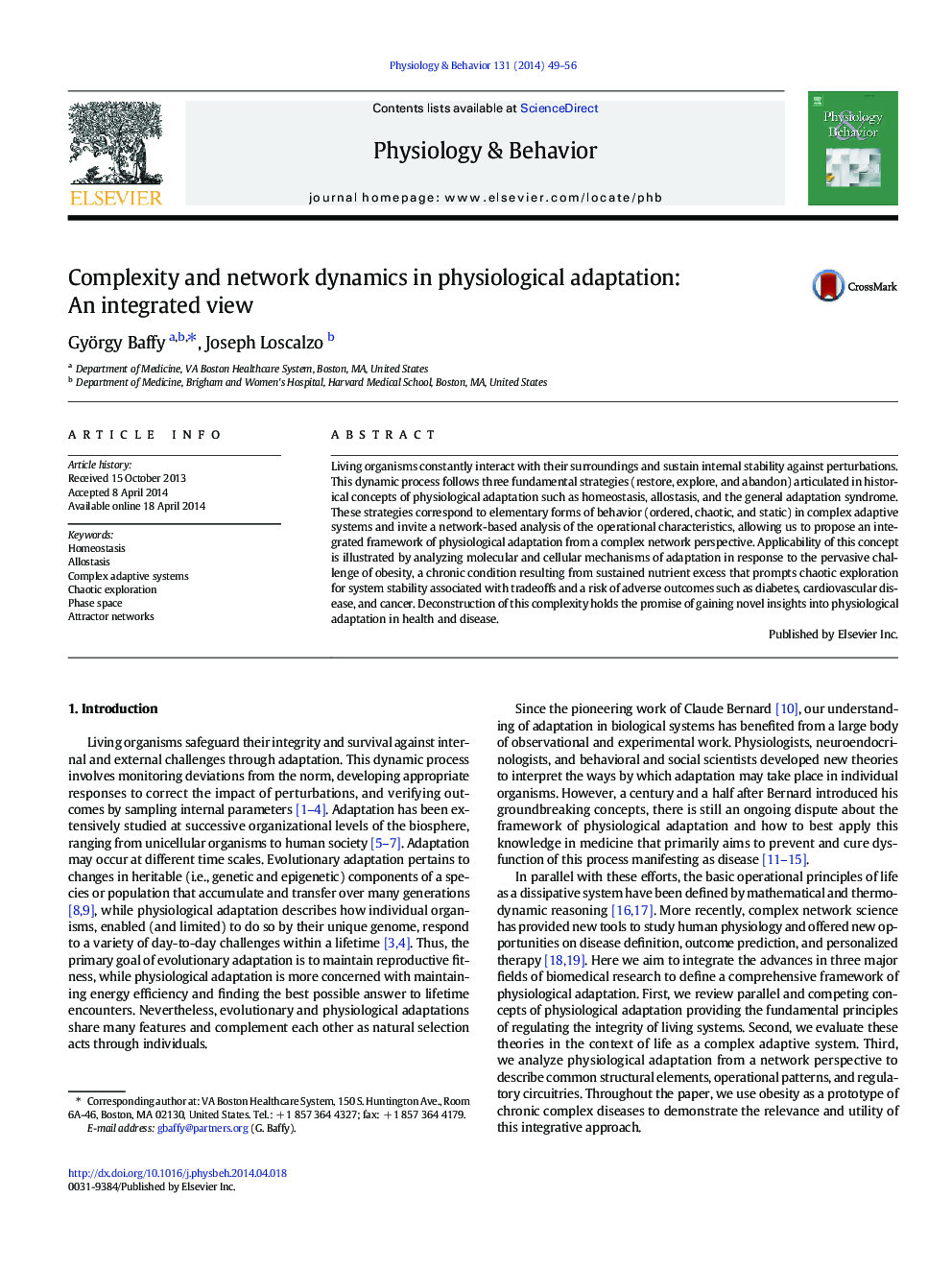| Article ID | Journal | Published Year | Pages | File Type |
|---|---|---|---|---|
| 5924063 | Physiology & Behavior | 2014 | 8 Pages |
Living organisms constantly interact with their surroundings and sustain internal stability against perturbations. This dynamic process follows three fundamental strategies (restore, explore, and abandon) articulated in historical concepts of physiological adaptation such as homeostasis, allostasis, and the general adaptation syndrome. These strategies correspond to elementary forms of behavior (ordered, chaotic, and static) in complex adaptive systems and invite a network-based analysis of the operational characteristics, allowing us to propose an integrated framework of physiological adaptation from a complex network perspective. Applicability of this concept is illustrated by analyzing molecular and cellular mechanisms of adaptation in response to the pervasive challenge of obesity, a chronic condition resulting from sustained nutrient excess that prompts chaotic exploration for system stability associated with tradeoffs and a risk of adverse outcomes such as diabetes, cardiovascular disease, and cancer. Deconstruction of this complexity holds the promise of gaining novel insights into physiological adaptation in health and disease.
